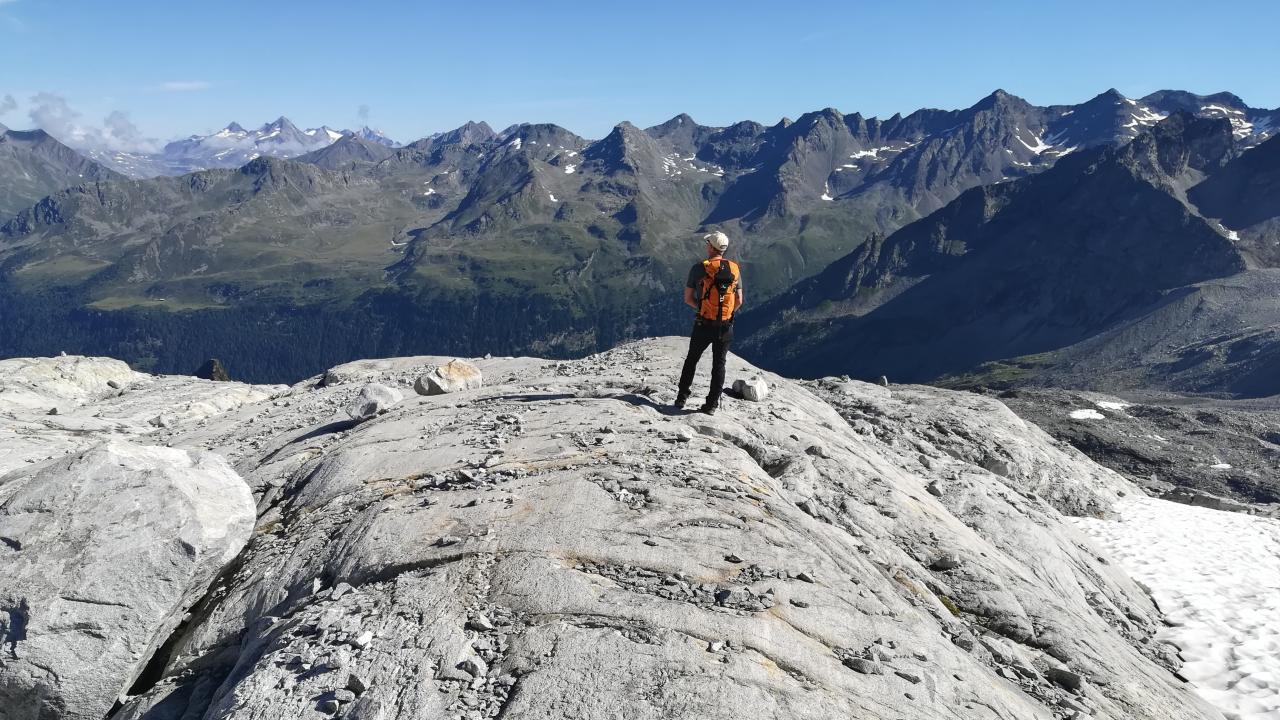
"All Alpine glaciers will continue to decrease over the next few decades, and in fact most are in danger of disappearing completely by the end of the century," warns ICTP climatologist Filippo Giorgi. Giorgi is one of the authors of a new open access research published in Climate Dynamics, one of the most influential peer-reviewed scientific journals in the field of meteorological and atmospheric sciences.
The study, born as part of the CHANGE project funded by the European Union and coordinated by researchers at Aberystwyth University in Wales, highlighted an alarming trend of glaciers in the European Alps, destined to disappear almost entirely by the end of this century.
The team of researchers created a model of alpine glaciers, calculating the conditions in which the glaciers would be in equilibrium, i.e., stable and not at risk of melting, depending on various environmental and climatic factors. The main purpose of the research was to make more accurate predictions of the likely response of glaciers to climate change.
"The results of this study indicate the inevitable destiny of Alpine glaciers to disappear, for all the various scenarios of increasing greenhouse gases in the atmosphere examined, even for the most optimistic ones," says Giorgi. "In the case of "business as usual”, the scenario in which everything remains the same and no measures are taken to change the situation, forecasts indicate that the disappearance of almost all Alpine glaciers is certain."
The 4,000 Alpine glaciers include crowded ski destinations much loved by Europeans, such as the famous Klein Matterhorn in Zermatt, Switzerland, the Hintertux glacier in Austria and the La Grand Motte glacier in Tignes, France. According to the research, the glaciers of these popular ski resorts will disappear nearly completely by 2100. This will add numerous knock-on effects on water storage and runoff, on the environment and on alpine ecosystems. The results of the study show that the response of alpine glaciers to climate change will be rapid and highly variable, underlying the crucial need for internationally organized actions and a coordination between scientists and institutions.
"The disappearance of the glaciers would have enormous impacts on Alpine ecosystems and a massive drop in availability of water resources for human activities, especially in summer," says Giorgi. “The Alpine environment is one of the most important in Europe, both from the point of view of mountain ecosystems and from that of the economy, and it is also one of the most vulnerable environments to global warming. This should therefore represent a great wake-up call for Europe in general and Italy in particular."
The team developed a new approach to simulate possible changes in glacier extension over the next few decades. This approach focuses on calculating the altitude at which the accumulation of ice and its melting are equal, so the glacier can be considered stable and not at risk. The results cover the entire European Alps region and are based on 200 years of collected data and climate predictions, in the period from 1901 to 2100.
Project coordinator Professor Neil Glasser of Aberystwyth University commented: “Climate change is a global issue, it affects us all, and one of its most immediate impacts is on glaciers and ice sheets. Glaciers are the ‘Canary in the Mine’ for climate change: their retreat is so fast. There will be bigger changes to come from climate change, but this dramatic disappearance of glaciers from the Alps is one of the most immediate and visible effects."
"The findings from the CHANGE project also provide insights relevant to similar mountain glaciers globally," adds Glasser. “The results contribute to a better understanding of how glaciers in the European Alps are responding to a changing climate. If, as we expect, we see these patterns replicated on a global basis, the retreat of mountain glaciers will have significant implications for sea level rise."
The results of the study are clear: timely and decisive actions are necessary to change the course of events and try to preserve such a central element in the European Alpine ecosystem. "The only effective way to contain this phenomenon is to contribute to the drop of greenhouse gas emissions into the atmosphere, in order to stabilize temperatures below the threshold established in the 2015 Paris agreement, which is 1.5 - 2 ° C compared to pre-industrial temperatures globally,” concludes Giorgi. “Italy must therefore accelerate the conversion to a green economy and put pressure on the international community to ensure that this conversion will take place also at European and global levels. Locally, the effects of global warming should be considered in all socio-economic policy planning such as water management, agriculture and land management."
















